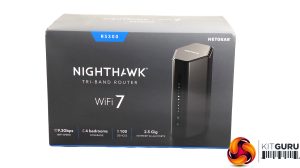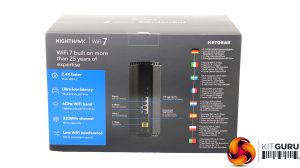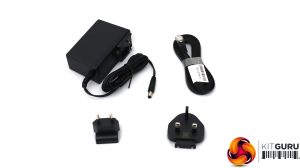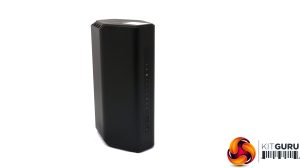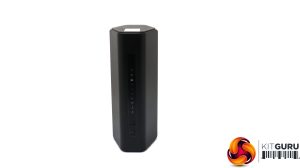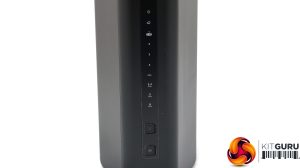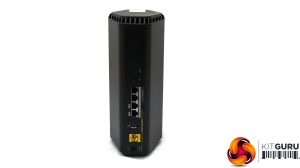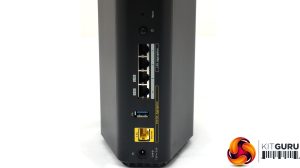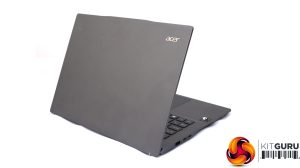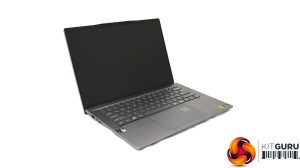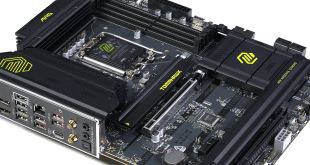NETGEAR Nighthawk routers mean business. The RS300's box is dark and serious.
The power supply comes with European and UK plug pin options, and there's a skinny Cat 5 Ethernet cable included as well, intended for use with the broadband modem.
The RS300 is a somewhat unassuming hexagonal black obelisk, with a bank of LEDs down the front, ports down the back, and ventilation ports on the top edges towards the rear. The lights include power, Internet connection, the four LAN ports, USB, and then the three radio wavebands. Finally, at the bottom are buttons for Sync/WPS and toggling all the LEDs on the front.
The ports are ranged vertically up the back of the router, with a recessed reset and regular on-off button at the top. Below that is a pair of Gigabit Ethernet LAN ports, which can be aggregated together when routed to a Network Attached Storage device. Below that is a pair of 2.5Gbit Ethernet LAN ports. The lower of these can be aggregated with the 2.5Gbit Ethernet WAN port at the bottom, to create a 5Gbit link to a compatible modem. In between these two is a USB 3.0 port, which can only be used for adding storage, not sharing a printer or mobile data modem.
Overall, this is a decent selection of ports, although the top-end NETGEAR Nighthawk RS700S offers 10Gbit Ethernet and an extra LAN port. Most users will find four LAN ports perfectly adequate, however.
Acer Swift 14 AI WiFi 7 Laptop
For testing the latest WiFi 7 wireless networking, Acer sent us its Swift 14 AI notebook, based around a Qualcomm Snapdragon X Plus Oryon X1P-64-100 CPU. This is a ten-core processor running at up to 3.4GHz across all cores, although without a single-core boost frequency (you need the X1P-66-100 for that). Our sample was supplied with 16GB of LPDDR5x memory and a 1TB SSD. Although this is an ARM-based laptop, it can still run Windows 11 and our standard WiFi testing software, iPerf3. It's a solid choice for road warriors who need to spend days away from a reliable power source, thanks to a 26-hour battery life.
 KitGuru KitGuru.net – Tech News | Hardware News | Hardware Reviews | IOS | Mobile | Gaming | Graphics Cards
KitGuru KitGuru.net – Tech News | Hardware News | Hardware Reviews | IOS | Mobile | Gaming | Graphics Cards


